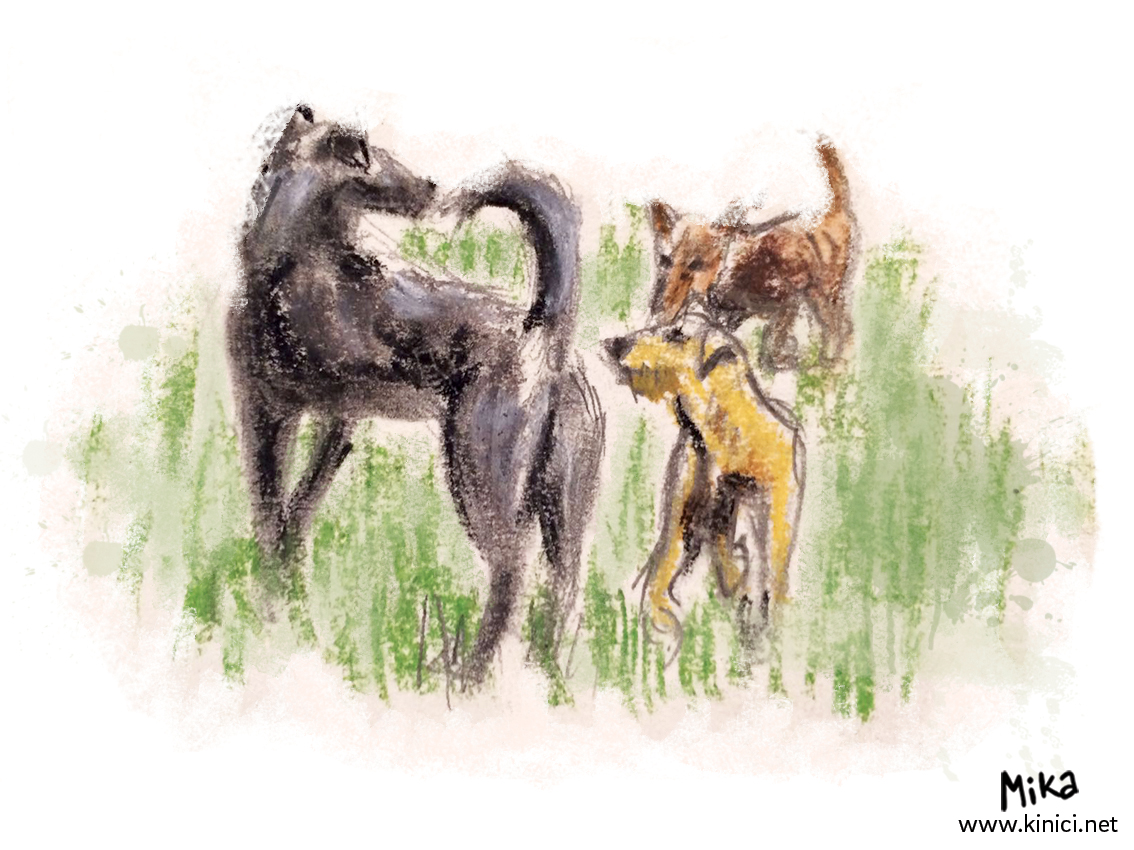Most of the predatory members of a dog family are social animals. Wolves, African Wild Dogs, Dholes, Jackals, Coyotes, Dingos, Domestic Dogs – they all live coupled, in smaller groups or packs. The wolf and African wild dog ones are the largest; jackal, dhole and dingo ones are somewhat smaller; coyotes live as couples or in smaller groups. Domestic dogs are also social beings. But in domestic dogs we can find variations from numerous pack to a pack consisted of only two dogs, a dog and a human, a dog and a horse, a dog and a cat... Maned Wolves and Foxes usually live solitary lives.
Native Americans were in awe with strength, courage and intelligence of wolves and wild dogs. They were amazed by loyalty that exists within a pack.
A pack enables catching a larger prey, easier defence of the territory and easier protection from other predators.
The size of a pack relies on food availability. It can be as small as two-member pack to packs so huge that there are more than thirty specimens. Wolves usually have 8 to 24 member pack. In bigger packs there are often more males than females.
Packs are hierarchical systems. Every member knows its role perfectly and shows its dominance or submission in correspondence with other members. Clearly established relations gives this type of community stability and strength.
Heading the packs are the leaders. They distinctly show the subordinates which behaviour is acceptable and which rules must be followed. Every member has its role in hunt, defence of a territory, raising the litter... And every single one is important. And every one of them seeks its place in a pack. Without the leaders, dogs that are in the back of the pack would not know who and where to follow. Without the dogs in the back, leaders would not know if any danger is approaching a pack.
 Hierarchy
Hierarchy
The core of a wolf pack are alpha male and alpha female that stay together their whole lives. The rest of the pack are their children – young cubs and older half-mature wolves.
Hierarchy is linear – the most dominant wolf that wins battles with other wolves is alpha male. Beta male loses from alpha but beats others. The lowest position in the hierarchy is omega.
For the benefit of the pack, the instinct of the leader is as important as its physique and strength.
Alpha male and alpha female – Dominant wolf couple and leaders of a pack. They have the privilege of procreation (creating and giving birth to offsprings), that is, they are the only ones reproducing. They have the primacy over food and other activities.
Alpha male – Leads pack actions in the hunt, protection of members of the pack from enemies, initiates attacks on other wolves, heads the migrations, keeps other members in their place since it can happen that they oppose.
Alpha female – Crucial role during hunting, but her alpha characteristic is reflected in reproducing period and while raising cubs. In these times other members are attending all her needs.
Beta male and beta female – Wolf couple second in the hierarchy, most powerful after the alphas.
Gamma – Wolves that were defeated by alpha and beta, but are higher than omega.
Omega – Lowest in the hierarchy. Subordinate member that is the last in food sharing.
